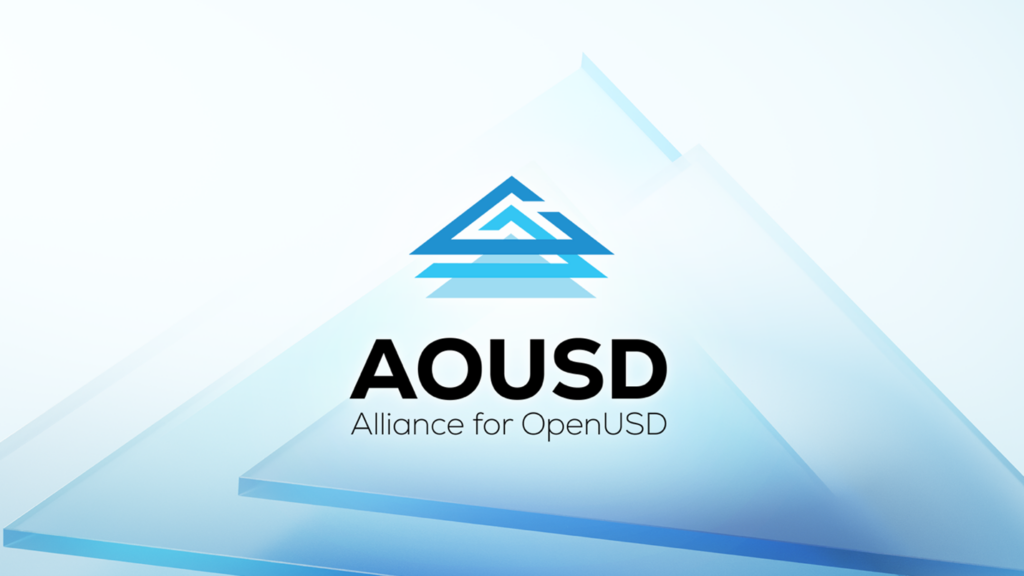Tech leaders Pixar, Adobe, Autodesk, and Nvidia have announced the formation of the Alliance for OpenUSD (AOUSD) to promote development, standardization, and growth of the Open Universal Scene Description (OpenUSD) technology.
Universal Scene Description (USD) began as an experiment at Pixar a little over a decade ago, as a way to streamline complex workflows and interchange the plethora of data generated by different tools and formats. Finding Dory, released in June 2016, was the first feature-length film to use a USD-based pipeline. During the film’s production, Pixar began to reach out to early partners for feedback, and at Siggraph 2016, USD made its public coming-out on GitHub. The rest, as they say, is history, as many other studios began adopting the 3D framework.

USD is an open and extensible framework and ecosystem for describing, composing, and interchanging 3D CG data. With a focus on collaboration and non-destructive editing, USD generates a hierarchical data structure, making it easier to exchange data created in various DCC applications. USD may have originated with Pixar in the film world, but its roots have spread into gaming, CAD, architecture, design, and other areas. Last year, USD was thrust further into the spotlight when Nvidia, which built its Omniverse platform on top of USD, said it sees USD as the foundation of the metaverse and is committed to its expansion and adoption. Others have done so as well.
Wind the clock forward a year and industry support for USD continues to grow. To this end, five technology leaders—Pixar, Adobe, Apple, Autodesk, and Nvidia—from diverse industry segments have launched the Alliance for OpenUSD (AOUSD) to collaboratively define and advance OpenUSD as it becomes even more widespread across different industries. Each of those founding members already have made significant contributions and investment to advancing OpenUSD and have created this organization to serve the industry at large.
AOUSD is hosted by the Linux Foundation under its Joint Development Foundation, with the aim of standardizing, developing, evolving, and growing OpenUSD technology.
The goal of the alliance is to promote interoperability of 3D content through the use of OpenUSD. As the result of a standardized 3D ecosystem, developers and creators will be able to build and simulate large-scale 3D projects as well as tools.
So, the work of the alliance becomes twofold. First, the AOUSD is tasked with developing written specifications for OpenUSD’s core functionality to make the open-source project into a specification, which will enable it to become an international standard. And second, the alliance will advance and evolve the technology.
“With the announcement of AOUSD, we signal the exciting next step: the continued evolution of OpenUSD as a technology and its position as an international standard,” said Steve May, CTO at Pixar and chair of AOUSD. “We really feel that OpenUSD will be a fundamentally important technology for almost every industry. Whether it’s immersive 3D content, interactive experiences, new spatial computing platforms, or scientific and industrial applications, OpenUSD will become the fundamental building block on which all 3D content will be created.”
AOUSD will provide an open forum for collaborative development and discussion as it relates to proposed enhancements to the technology by the industry, as the alliance works to shape the future of OpenUSD. In addition to the founding members, a number of other companies have committed to membership in the alliance as well. Companies and organizations are encouraged to join AOUSD, which can be done at www.aousd.org.
What do we think?
When the alliance was announced, I wondered why it was necessary if USD is so successful. Pixar’s Steve May answered that question in a press briefing by pointing out that despite its adoption and support, USD is not a standard. And let’s face it, we seem to have standards for just about everything else—text, video, photos—but not complex 3D content. Achieving the full potential of OpenUSD requires work that needs to be done across multiple platforms and many devices to ensure its viability for years into the future. This is the first step in that direction.